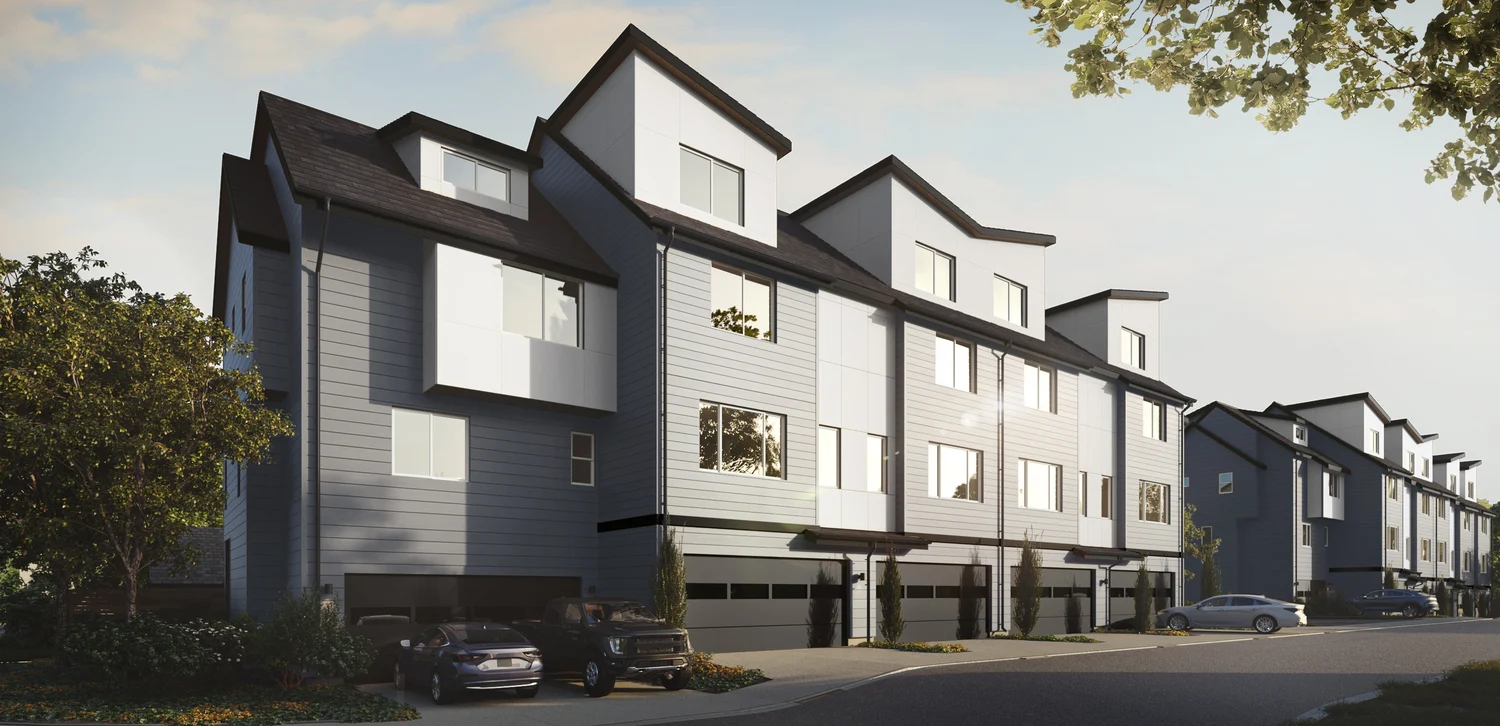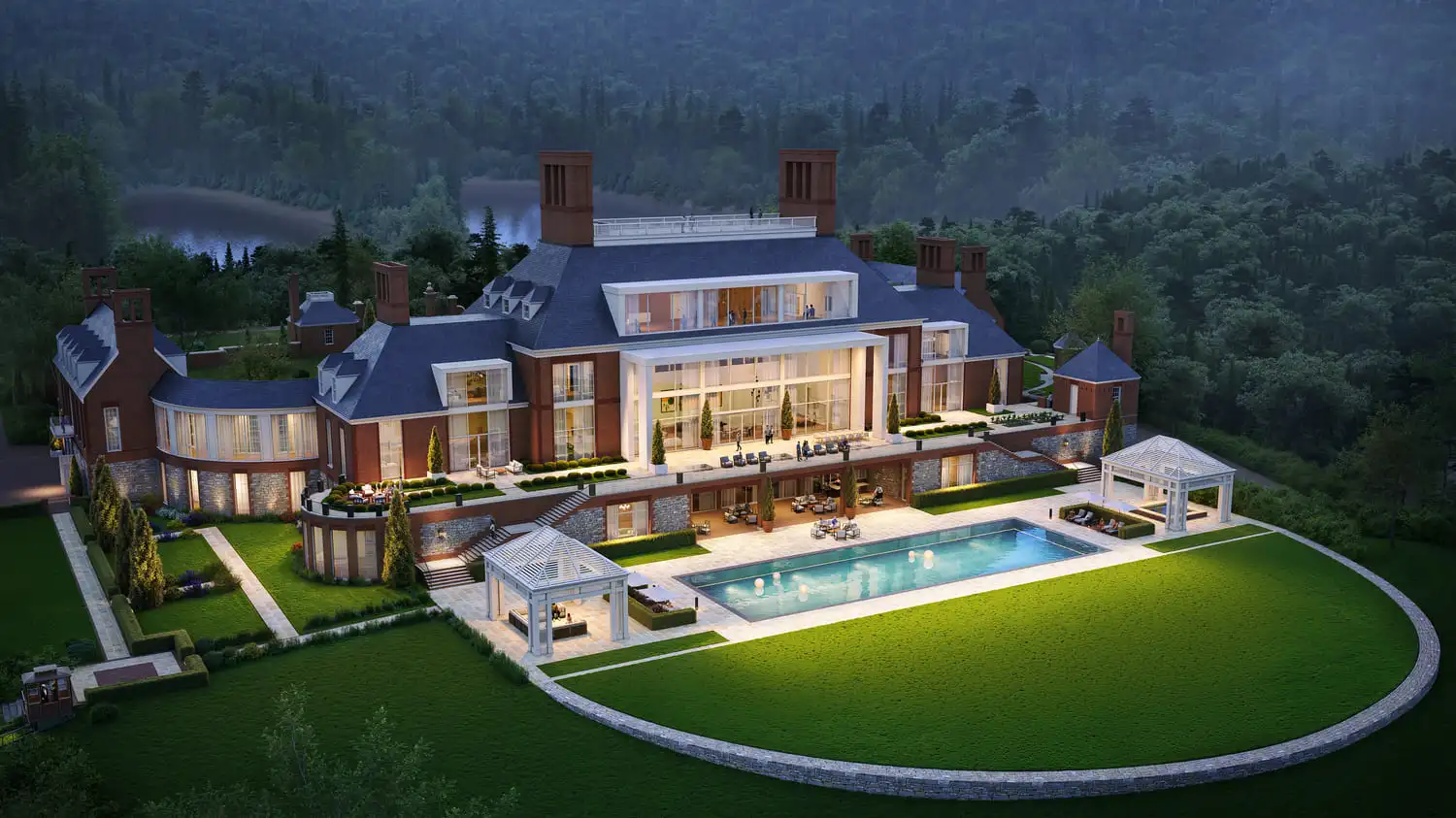Best Architectural 3D Modeling Software in 2025
Discover how 3D modeling software for architecture enhances design processes and enables clearer, more impactful communication of ideas.

A sketch may start the vision, but only powerful architectural 3D modeling software can turn it into a buildable, client-ready concept. In 2025, these tools aren’t just for production—they’re strategic assets. From quick concepting to BIM precision, choosing the right platform means balancing speed, quality, and flexibility. In this guide, we explore the best options—and when it’s smarter to hire professionals instead.
Why Architecture Modeling Software Is Crucial for Architects
Modern 3D modeling software for architecture is essential in today's design workflows. Here’s why:
- Enhanced Design Visualization: Quickly transform ideas into photorealistic visuals, helping clients understand the vision.
- Improved Design Accuracy and Efficiency: Reduce errors and streamline revisions.
- Seamless Integration with BIM: Tools now align closely with BIM workflows for better collaboration.
- Speed: Iterate faster with smart modeling tools.
- Increased Design Complexity: Handle intricate forms and environments.
- Cost and Time Savings: Minimize resource waste by identifying issues early.
By incorporating 3D modeling software architecture early in the planning stage, specialists can avoid costly changes later, enhance client communication, and ensure their designs align with practical needs and aesthetic ambitions.
Best 3D Modeling Software for Architects in 2025
Choosing the right visualization tools is crucial for architects, designers, and engineers. The market offers various architectural modelling software options, each tailored to different needs—from quick conceptual modeling to detailed BIM workflows and photorealistic rendering. Below, we look at their key features, pros and cons, and pricing.
1. SketchUp Pro
Key Features:
- User-friendly and intuitive interface designed for fast learning;
- Extensive plugin library to expand functionality;
- Real-time visualization integration with V-Ray rendering engine.
Pros:
- Ideal for conceptual design and rapid prototyping;
- Widely adopted in interior design workflows and client presentations;
- Makes it easy to create and share presentation-ready models.
Cons:
- Limited capabilities for detailed BIM workflows;
- Not suitable for complex construction projects requiring parametric modeling.
Price: Go: $119/year, Pro: $349/year
SketchUp Pro has long been a staple in the architectural 3D modeling software community due to its simplicity and speed. It’s perfect for architects and interior designers who want to quickly create visual concepts and communicate ideas to clients without dealing with steep learning curves.
2. Revit
Key Features:
- Full BIM-centric parametric modeling environment;
- Advanced collaboration tools via cloud-based platforms;
- Automates construction documentation and supports building lifecycle management.
Pros:
- Excellent for detailed architectural design and construction documentation;
- Enables seamless interdisciplinary collaboration among architects, engineers, and contractors;
- Provides comprehensive control over large-scale projects.
Cons:
- Steeper learning curve, especially for beginners;
- It requires powerful hardware and is a more significant investment.
Price: $3,005/year.
Recognized as an industry standard, Revit continues to be one of the most popular 3D modeling software for architects. It offers advanced tools that streamline every phase of the building lifecycle.
3. Blender
Key Features:
- Open-source and free to use;
- Advanced modeling, animation, and rendering capabilities;
- Supports photorealistic rendering with its Cycles engine.
Pros:
- Completely free and highly customizable with a vast range of plugins;
- Powerful for high-quality architectural visualization and presentations;
- Strong community support and extensive tutorials are available.
Cons:
- No native BIM tools, which limits integration into architectural construction workflows;
- It is not purpose-built for architecture, so extra setup or plugins may be required to match professional standards.
Price: Free.
Blender’s rise in 3D architectural modeling software owes to its powerful animation, lighting, and texturing tools, making it a good choice for studios on a budget seeking top-tier visuals without licensing costs.

4. AutoCAD Architecture
Key Features:
- Architectural toolset built into the familiar AutoCAD environment;
- Full compatibility with DWG file format;
- Component-based modeling for building elements.
Pros:
- Familiar to AutoCAD users, easing the transition to 3D architectural modeling;
- Efficient bridge between traditional 2D drafting and 3D design;
- Suitable for schematic and detailed architectural work.
Cons:
- Less robust 3D visualization tools compared to specialized rendering software;
- Does not support full BIM workflows.
Price: $2,095/year.
AutoCAD Architecture strikes a balance by combining classic drafting with architecture modeling software capabilities, making it a reliable choice for architects who want to upgrade their 2D skills with some 3D capabilities without switching platforms.
5. ArchiCAD by Graphisoft
Key Features:
- Powerful BIM collaboration and cloud teamwork tools;
- Integrated real-time rendering for immediate visual feedback;
- Optimized for Mac OS users and cross-platform compatibility.
Pros:
- Highly visual and intuitive modeling workflows;
- Preferred by many Mac-based studios and creative teams;
- Strong collaboration features enable seamless teamwork.
Cons:
- Smaller user base than Revit, which may impact hiring specialists or community support;
- Pricing is on the higher side.
Price: €2,151/year.
ArchiCAD is a strong contender in architecture 3D modeling software, especially popular among firms working in Mac environments. Its clean interface and emphasis on visual modeling make it a favorite for architects focusing on design quality.

6. Rhino 3D
Key Features:
- NURBS-based modeling for complex and organic shapes;
- Grasshopper visual scripting plugin for parametric and computational design;
- Handles highly detailed and freeform geometry with ease.
Pros:
- Perfect for projects involving complex, organic, or parametric forms;
- Widely used in computational design and digital fabrication workflows;
- Offers unparalleled flexibility and precision in 3D modeling.
Cons:
- Minimal BIM integration, limiting use in traditional architectural documentation;
- Requires learning Grasshopper for full parametric power.
Price: €995 perpetual license.
Rhino is favored by architects and designers working with innovative and intricate geometries. Its parametric capabilities via Grasshopper unlock a wide range of design automation and advanced modeling options. Rhino is considered one of the best software for 3D architecture modeling.
7. BricsCAD BIM
Key Features:
- AI-assisted modeling and BIM automation tools;
- Full DWG compatibility for easy integration;
- Cloud collaboration and multi-disciplinary coordination.
Pros:
- Cost-effective alternative to major BIM platforms;
- Quick adoption for users familiar with DWG workflows;
- Incorporates AI tools for increased productivity.
Cons:
- The user interface may feel less intuitive compared to competitors;
- Smaller market presence.
Price: Lite $314/year, Pro $711/year
BricsCAD BIM is gaining traction by offering a powerful BIM solution with AI integration at a lower price point, which is ideal for firms seeking a balance between functionality and cost. It’s among the best architecture modeling tools for budget-conscious professionals.
Optional Software Worth Mentioning
- Chief Architect: Best for residential design and home remodeling with an easy drag-and-drop interface. Price: $1,995/year.
- Vectorworks Architect: Supports hybrid 2D/3D workflows with advanced documentation and flexible file support. Price: €1,500/year.
- 3ds Max: Industry-leading for high-end rendering and animation, widely used in large architectural firms. Price: $1,945/year.
- FormIt: Cloud-based conceptual design tool included in Autodesk AEC Collection, featuring real-time collaboration and solar analysis.
When selecting architecture modeling software in 2025, consider your specific workflow needs: Is your focus BIM-heavy construction documentation, conceptual design, or high-end rendering? Each of the tools listed above excels in different areas, and the right choice can greatly enhance your productivity and project quality.
-2.webp)
Should You Invest in Architectural 3D Modeling Software or Hire a Professional Service?
When deciding whether to invest in 3D visualization programs or to hire a professional service, several important factors come into play, including cost, time, visual quality, and flexibility. Investing in architecture modeling tools requires budgeting not only for often expensive annual software licenses but also for powerful GPU-heavy hardware needed to run these programs smoothly.
Additionally, there is the hidden cost of training — mastering the best 3D modeling software for architects can take months or even years, during which productivity may be limited.
On the other hand, hiring professional services typically involves paying per project, offering more predictable costs and timelines. These experts bring years of experience and refined workflows, especially when using specialized rendering software and production pipelines perfected through hundreds of projects.
This proficiency often results in visual quality and polish that can be difficult to achieve with an in-house team, particularly one still gaining proficiency with the top 3D modeling software for architects.
Furthermore, outsourcing offers greater scalability and flexibility; professional teams allow you to adjust output volume according to project demands without the need to hire full-time staff. This flexibility is invaluable for firms that experience fluctuating workloads and tight client deadlines.
Ultimately, while owning and mastering architecture 3D modeling software provides full control over the creative process, partnering with skilled professionals often delivers faster, higher-quality results with less overhead and risk.
Partnering with PIXREADY for Architectural Modeling Rendering
PIXREADY is a premier partner for firms looking to augment their design capacity with top-tier expertise.
Why PIXREADY?
Our streamlined workflows enable quick, iterative feedback loops, ensuring projects progress smoothly and meet tight deadlines. We deliver high-quality, photorealistic models and renders using architectural 3D modeling software, transforming concepts into vivid, lifelike presentations.
Customization is central to our approach. Every architectural model and render is crafted to match your unique brand identity, design intent, and technical requirements. We use cutting-edge technology like Unreal Engine for real-time rendering and AI-enhanced workflows to streamline processes and improve accuracy. We also leverage some of the best software for 3D modeling for architecture to ensure precision and creative flexibility throughout the process.
We also leverage specialized product rendering programs when visualizing interior objects, custom furnishings, or decor elements, ensuring every detail is represented with precision and visual impact.
As a Platinum Winner at the prestigious Houzee Awards 2025, we demonstrate our commitment to delivering award-winning quality on every project. Partnering with PIXREADY means gaining technical excellence and a collaborative approach that integrates smoothly with your team, helping you meet deadlines and exceed client expectations.
Here are three cases highlighting our expertise:

Swann’s Point House
Kimmel Studio Architects partnered with PIXREADY to produce high-end 3D renderings for Swann’s Point House, a 3,000-acre estate blending colonial architecture with modern elegance. PIXREADY’s photorealistic visuals captured every detail—from classic brickwork and wood-paneled interiors to expansive glass facades overlooking the James River.
Results
The immersive renderings led to faster client approval, early design refinements, and enhanced marketing assets. The visualizations highlighted the home’s harmony with its environment and helped communicate design intent clearly. PIXREADY’s expertise, combined with advanced 3D modeling software for architecture, transformed complex ideas into compelling visuals, supporting a smooth transition from concept to construction.
Conclusion
Choosing the best architecture modeling tools depends on your project scope and resources. In-house software provides control and iterative design opportunities, but partnering with experienced services offers unparalleled quality, speed, and flexibility.
For businesses aiming to stand out, investing in expert 3D rendering is not just an option—it's a necessity. Enhance your design process, impress clients, and speed up project approvals with the right mix of software for architectural 3D modeling and expert service.
.png)
Founded by a group of technology, architecture, and design professionals in 2018, PIXREADY is one of the challengers empowering the 3D visualization industry and making its products and services more affordable. We are determined to assist businesses around the world to create photorealistic images of their products and ideas and enrich the experience of their clients. We focus on the details, with the highest precision in every pixel.
Latest Posts
STAY UPDATED
Get occasional emails with 3D visualization news and insights
.webp)
.webp)
